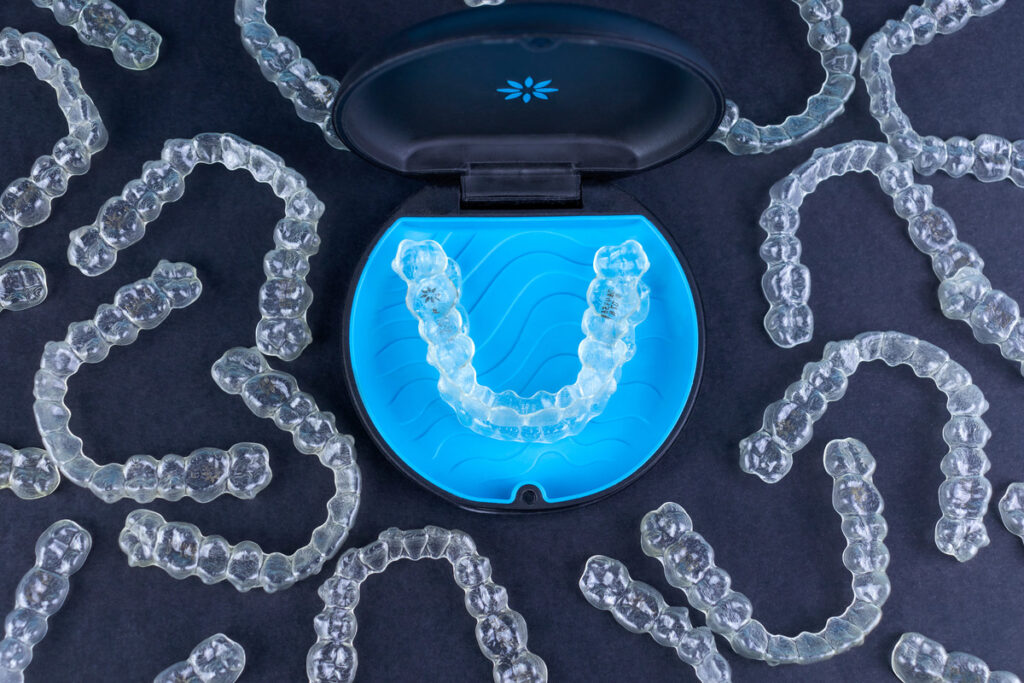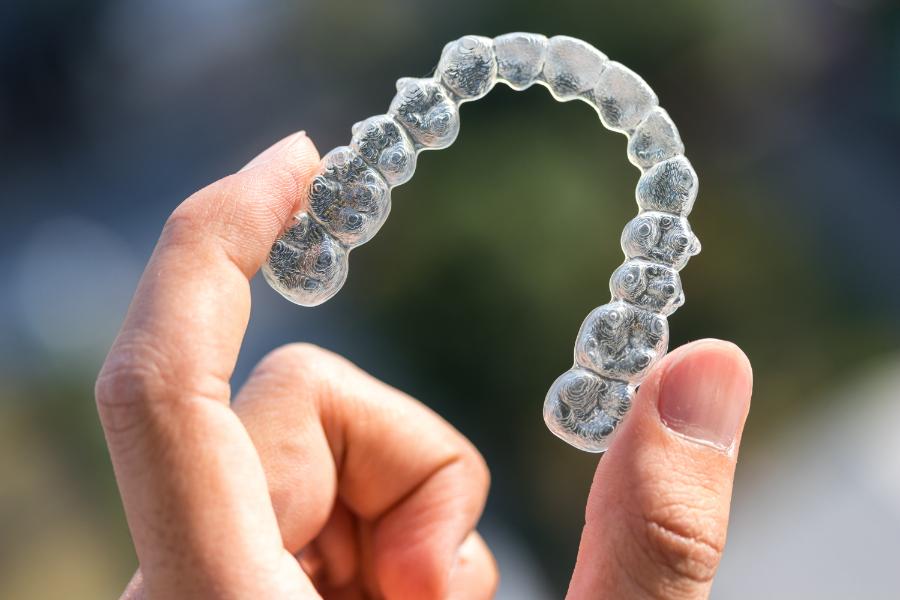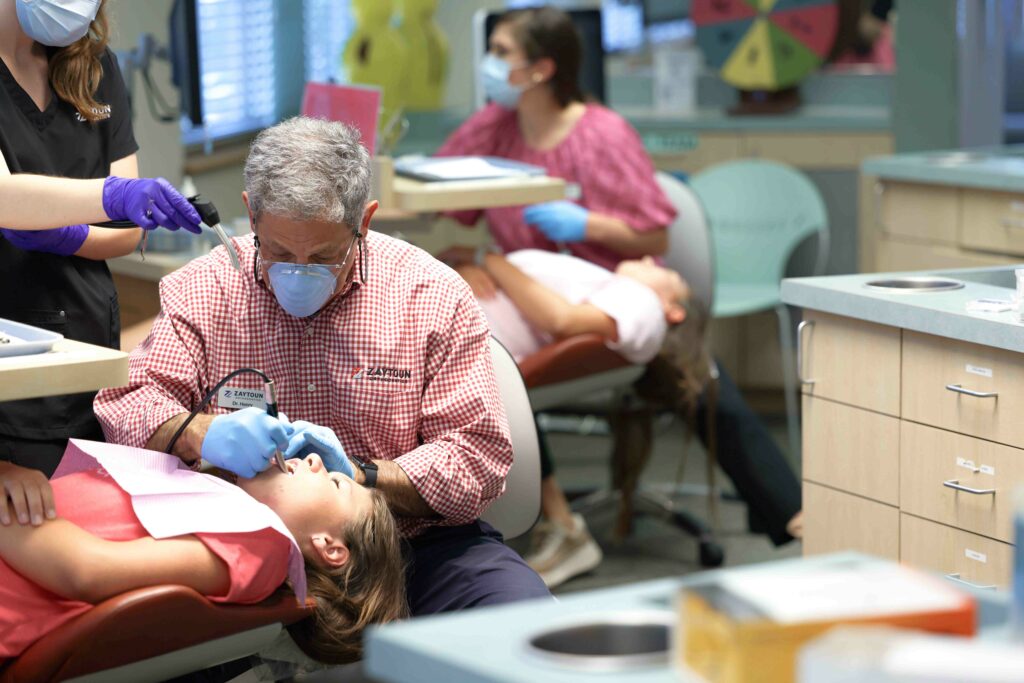Table of Contents
ToggleIf your Invisalign aligners aren’t tracking the way they should, don’t worry—you’re not alone. It’s a fairly common issue during treatment, and luckily, there are several ways to get back on track. Here are some steps you can take to correct tracking problems and ensure you’re making the most of your Invisalign treatment.
What Is Invisalign Tracking, Anyway?
Tracking refers to how well your Invisalign aligners fit over your teeth and how closely they follow your treatment plan. When everything’s going as planned, your aligners will fit snugly around your teeth, with no visible gaps. If there are gaps, that’s a sign that the teeth aren’t moving as expected, and the aligners aren’t tracking correctly.
Use Invisalign Chewies to Seat Your Trays
Chewies might sound a little funny, but they’re actually really useful. These small, soft, chewable tools help push your aligners more snugly onto your teeth. When you feel like your aligners aren’t fitting as tightly as they should, bite down on a Chewie for a few minutes to help them seat properly. Using chewies consistently, especially after meals, ensures that the aligners apply the correct pressure to move your teeth.
Stick to the 22-Hour Rule
Wearing your Invisalign trays for at least 22 hours a day is crucial for effective treatment. If you’re wearing them less, it can hinder your progress and lead to tracking problems. Be sure to only remove them when eating or cleaning your teeth—otherwise, keep them in to allow your teeth to shift as planned.

Talk to Your Orthodontist About Backtracking
If you notice that your teeth aren’t moving as expected, your orthodontist may recommend “backtracking.” This means returning to a previous set of aligners for a bit longer to give your teeth more time to shift properly. It’s a simple solution that can help you catch up without interrupting your entire treatment plan.
Consider a Treatment Revision
Sometimes, despite your best efforts, tracking issues may persist. In such cases, your orthodontist might suggest a revision of your treatment plan. This could involve taking new scans of your teeth and ordering updated aligners that better fit your current dental structure. While this can feel like a setback, it’s an important step in ensuring the best possible results for your smile.
Why Does Invisalign Tracking Fail?
There are several reasons why your Invisalign might not be tracking properly:
- Inconsistent Wear: The biggest reason is simply not wearing the aligners for the full 22 hours a day. Missing hours can slow down your progress significantly.
- Skipping Trays: If you’ve skipped a set of aligners or worn them out of sequence, it can throw off your tracking.
- Poor Fitting: Sometimes, swollen gums or improper seating of the aligners can prevent them from fitting correctly.
- Oral Hygiene Issues: Plaque buildup or other dental issues can also affect how well your aligners fit.

Signs Your Invisalign Isn’t Tracking Properly
- Visible Gaps: If you can see gaps between the aligners and your teeth, it’s a sign that the trays aren’t fitting properly.
- Air Bubbles in Scans: Your orthodontist might notice air bubbles in your progress scans, indicating a misalignment in your treatment.
- Misaligned Arches: Both your upper and lower arches need to track together. If one isn’t fitting properly, it can throw off the entire treatment.
What If Tracking Still Isn’t Improving?
If you’ve tried using Chewies and wearing your trays as prescribed, but things still aren’t improving, there are additional steps you can take:
- Backtracking: Reverting to a previous set of aligners can sometimes help reset your progress.
- New Scans: Your orthodontist might take new scans to create updated aligners that better fit your current tooth alignment.
- Switch Providers: If you’re still having trouble, it might be worth getting a second opinion from another orthodontist.

Conclusion
Invisalign tracking issues are common, but with the right approach, they can be fixed. Whether it’s using chewies, sticking to the 22-hour rule, or consulting your orthodontist for a treatment revision, there are plenty of ways to get back on track. Remember, a little diligence goes a long way when it comes to achieving your dream smile!
If you’re experiencing tracking problems with your Invisalign, don’t hesitate to reach out to Zaytoun Orthodontics for help. Our team is here to make sure your treatment goes smoothly, every step of the way.
The information provided in this blog is for educational and informational purposes only. It is not intended as a substitute for professional medical, dental, or healthcare advice. Always consult with a qualified healthcare provider for diagnosis, treatment, and answers to specific medical questions.

I’ve been around orthodontics for as long as I can remember with my father opening Zaytoun Orthodontics in 1959. That upbringing of being around my father and watching him change lives through perfecting smiles helped guide me in figuring out what I wanted to do when I grew up, which was to be in the healthcare field. Orthodontics for over 30 years. Joining my father and sister was a thrill for me and something that sets us apart from other orthodontists.





